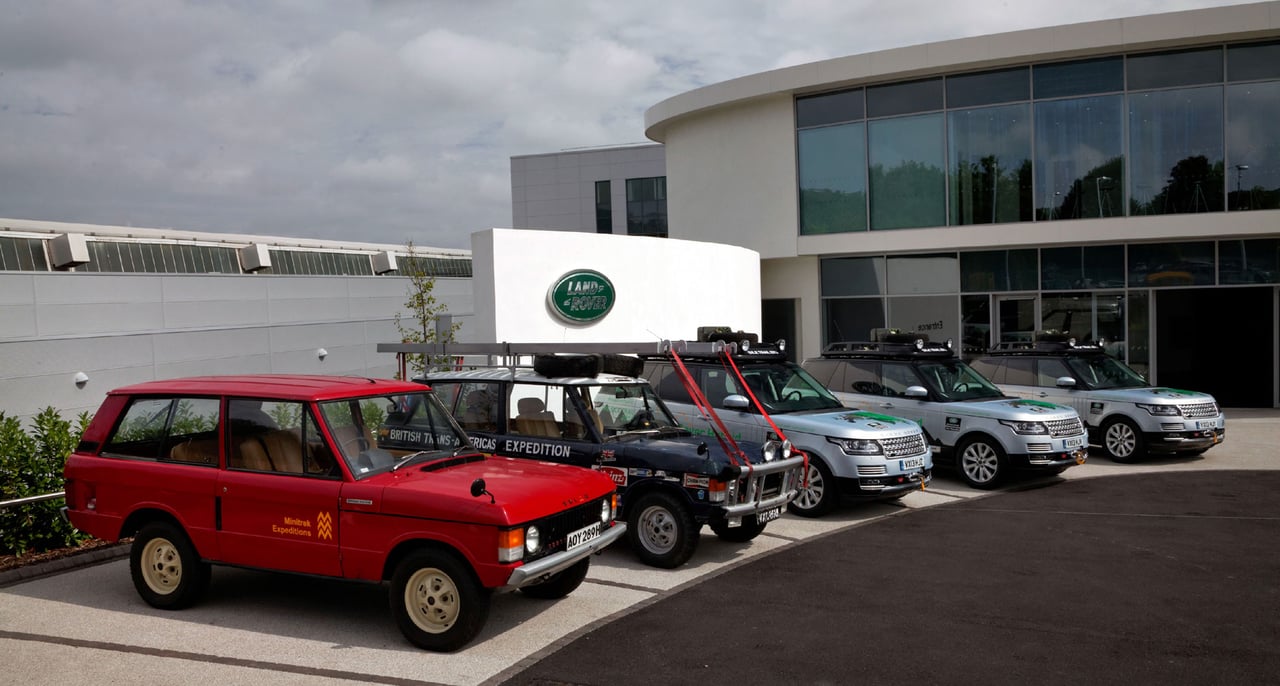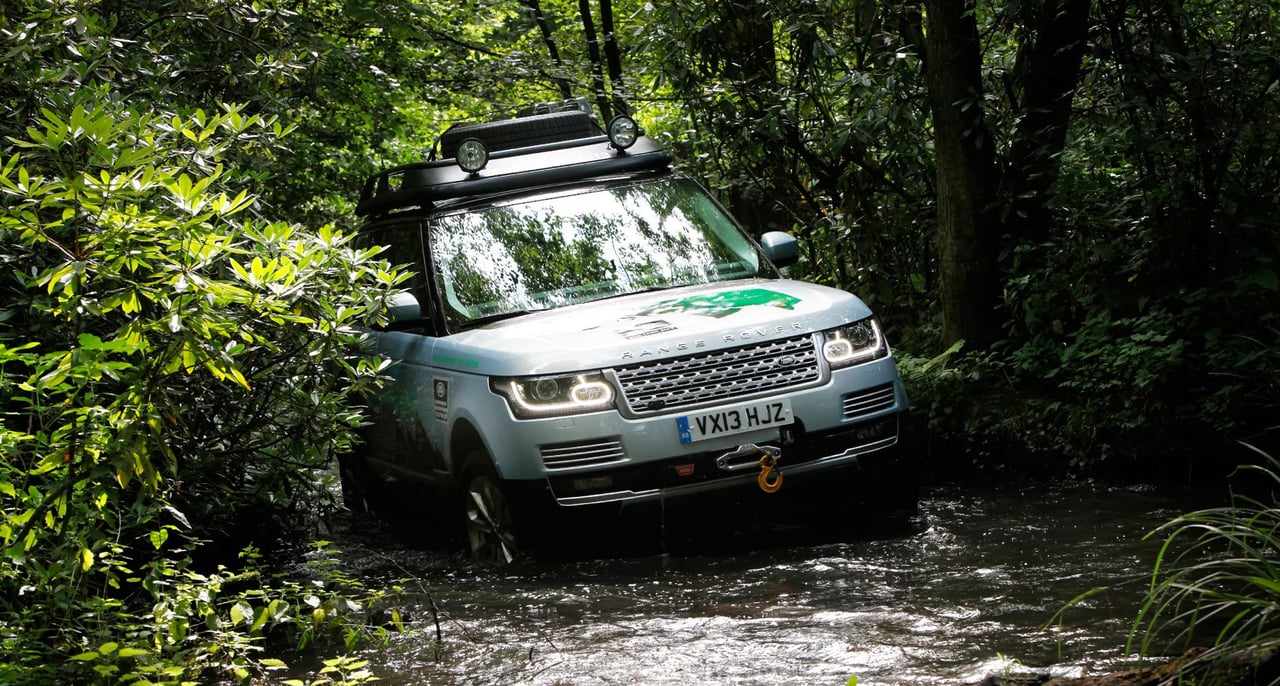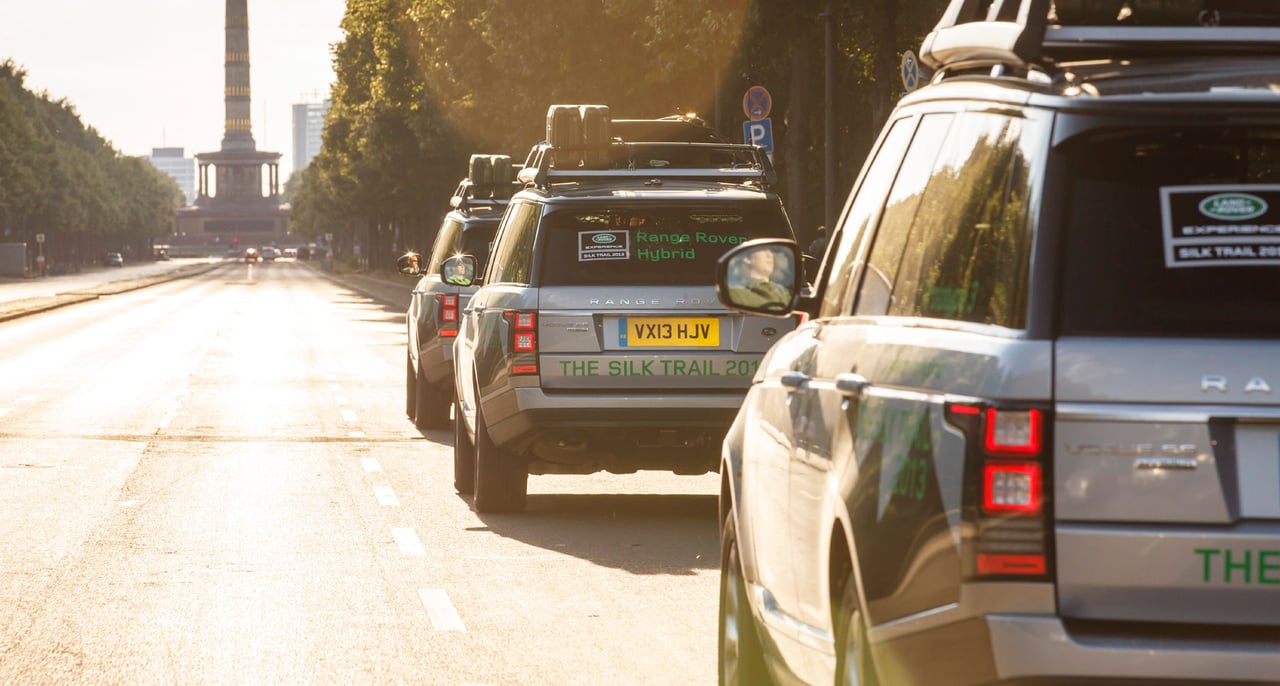For many manufacturers, the ultimate engineering test comes in the form of endless laps of the Nordschleife – but the Range Rover has always been capable of seeking out its very own ‘green hell’. Since the late 60s, developmental Range Rovers (badged ‘Velar’ in early cases) have undertaken demanding expeditions to unearth any on-the-limit problems before final approval. In 1969, a Velar toured Africa for the Minitrek mission, and 1971-72 saw British Army regiments given a pair of Range Rovers to complete a Trans-American expedition, which included the famous ‘uncrossable’ swamplands of the Darién Gap.
The Silk Trail: Anything but smooth

Still proudly bearing their scars, these historic Rangies lined up to see off their Hybrid descendants – the latter equipped with the necessary roof racks, jerry cans, ramps and impressive, flush-fitting winches. The daunting ‘road’ trip ahead is largely made up of the Silk Trail: the 4,000-mile route connecting Asia and Europe, named as a result of the Chinese silk trade which operated along its length between the 1st and 14th Centuries. But before embarking, it’s time to see if electrification has impinged on the Mark IV’s off-roading abilities, using Land Rover’s on-site proving ‘Jungle Track’.
"It subconsciously trains you to dab the brake pedal more softly and earlier in order to maximise results..."
Amazingly, the Hybrid’s only compromise has been a 120kg weight increase over the TDV6 model on which it’s based – wading depth and ground clearance remain unchanged, thanks in part to a boron steel case for the liquid-cooled battery. Much more relevant than the weight gain is the way in which the Hybrid system chips in to iron out flat spots in the torque curve, the task of attacking the Jungle Track’s inclines, sideslopes, stairs and tipping bridge becoming more measured as a result.

Although the first leg of the route – from Solihull to Brussels, via London – will be one of the tamer stretches, it still gives us a chance to evaluate the Hybrid’s performance in the ‘real world’ of motorway jaunts and city scrambles. Electric assistance helps boost performance to a similar level as the TDV8, while the only dip in refinement comes courtesy of the wind noise generated by our expedition-spec roof rack and accompaniments – and the excited back-seat chatter from the Land Rover engineers proudly revelling in their creation’s maiden voyage.
Anticipation = reward
Unlike many hybrids, the related instrumentation is executed in a classy manner - something we've grown to expect from a Range Rover. A subtle dial shows you how much kinetic energy you’re harvesting while braking, subconsciously training you to dab the left pedal (it's an 8-speed automatic) more softly and earlier in order to maximise results. You’re rewarded with up to a mile of electric-only drive when the meter maxes out. Land Rover suggests this function could be used for anything from overtaking horses on a country lane, to arriving home late at night with no more than a crunch of gravel. It's truly surreal, a car with such physical presence moving in complete silence.
With prices yet to be announced, it remains to be seen whether a Hybrid Range Rover makes financial sense but, without a doubt, it’s a masterstroke in uncompromised engineering. For now, its ultimate test lies in the prototypes making it to Mumbai – we’ll be rejoining the tour near the finish line in a few weeks' time.

Photos: Land Rover


















